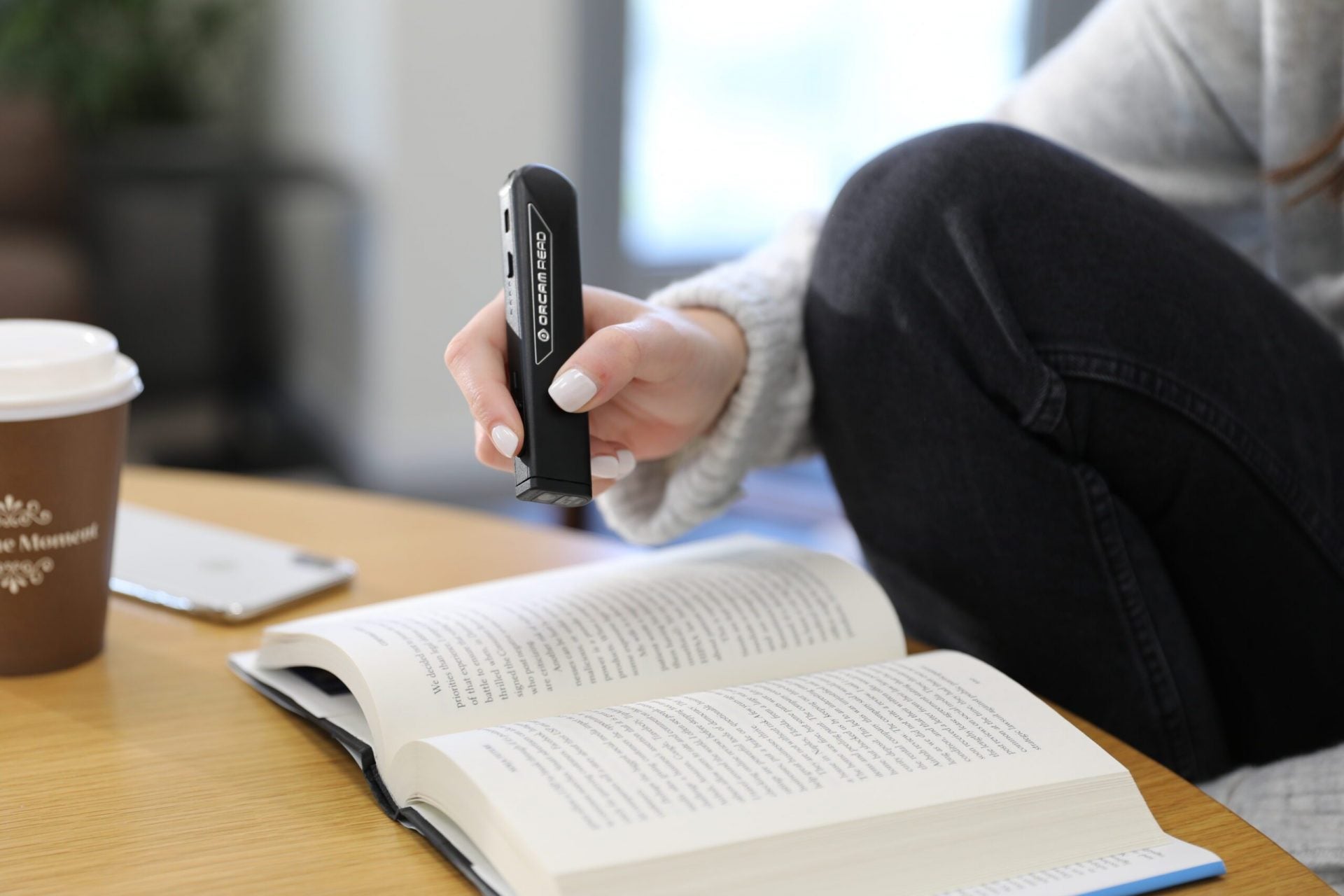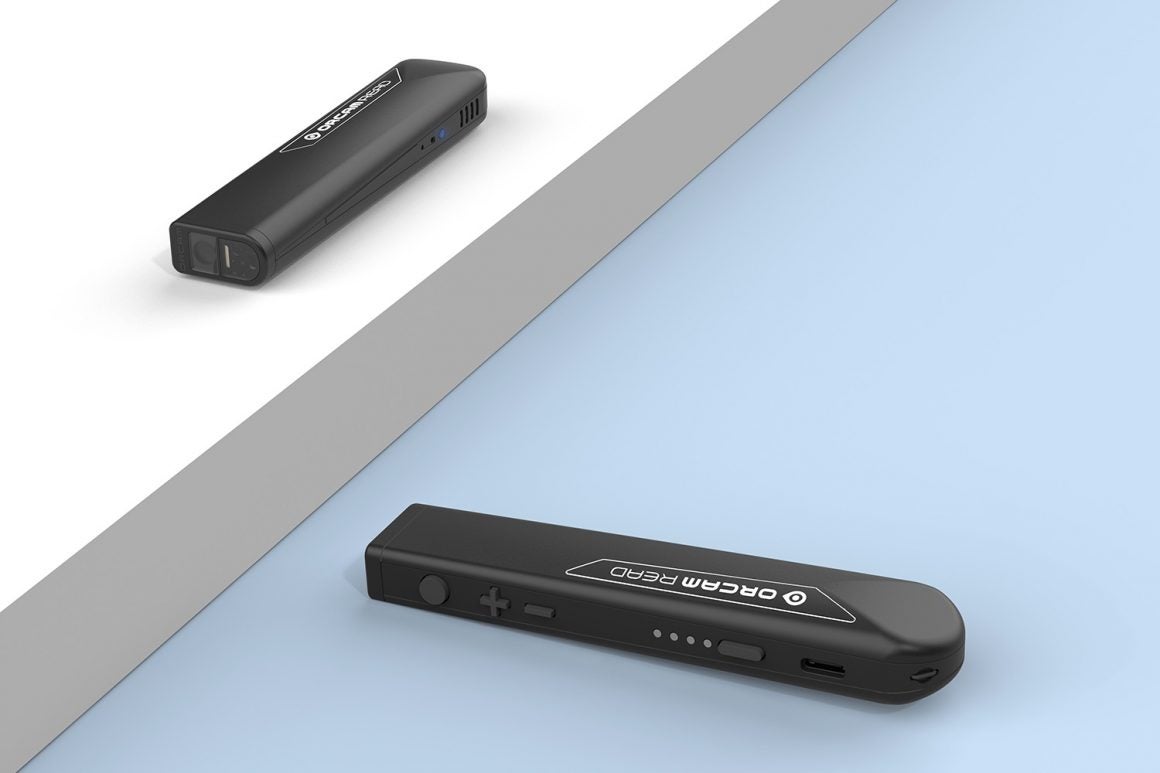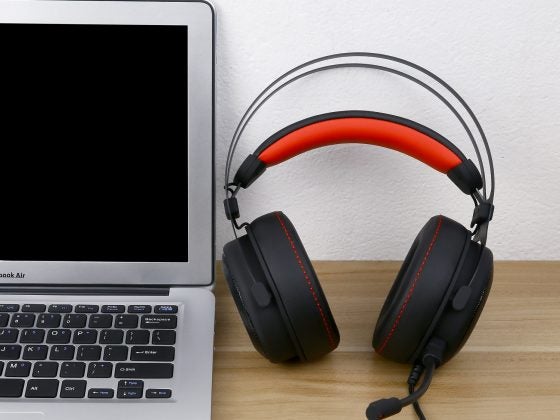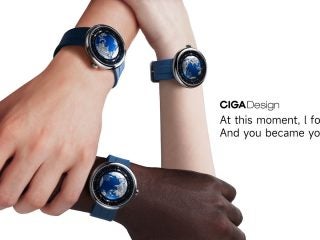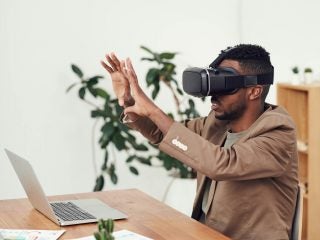“I have tried numerous techniques to try to ‘correct’ my dyslexia. It has taken me my entire life to realize it can’t be ‘fixed,’ and the tests and experiments were a waste of time.”
However, there is now an “amazing” assistive technology solution available that changes lives. Robert Donahue is a resident of Robbinsdale, Minnesota whose dyslexia was recognized in elementary school. He says the only way he made it through high school and college was by having his textbooks available on tape. But even with the tapes, he had to plan his classes a year in advance to ensure they were pre-recorded.
Challenging dyslexia with new tech
Dyslexia is a language-based learning disability or disorder characterized by a deficiency in word reading, word decoding, oral reading fluency and spelling. Though dyslexia can occur in people of all backgrounds and intellectual levels, with approximately 1 in 10 people affected, there are many misconceptions about the condition. Dyslexia is not just about getting letters or numbers mixed up or out of order, and is not related to IQ. After all, Albert Einstein was dyslexic and had an estimated IQ of 160.
But few people are properly diagnosed, which affects their chances for academic achievement. Over 40 million American adults are thought to have dyslexia, though only 2 million are identified as such. As up to 20% of school-aged children in the U.S. contend with dyslexia, this has important ramifications for school and work prospects down the line, in addition to the psychological and emotional frustrations that come along with this condition. But new tech innovations may help those with dyslexia better contend with text and achieve success academically and professionally, and also, perhaps, allow them to get excited about a new way to access reading for pleasure.
Opening up a “whole new world”
“The OrCam Read opens up a whole new world for people with dyslexia,” said Robert, referring to a pen-sized, wireless, lightweight AI-based device from OrCam Technologies that seamlessly and instantly reads text aloud – from any printed surface or digital screen. Robert is intimately familiar with the struggles of living with dyslexia and how assistive technology such as OrCam’s can change the life of a child or an adult. “I thoroughly enjoy reading books with OrCam Read. To be honest, I had stopped reading books for pleasure because it was too much work,” he said.
But OrCam Read does not ‘just’ address dyslexia. This revolutionary handheld AI Reader is the first-of-its-kind for people who have reading difficulties including reading fatigue, and those who read large amounts of text. OrCam Read is the only personal AI reader that captures full pages or screens of text. Its intuitive point-and-click operation activates two precision laser guidance options to read the entire highlighted text, or target where to begin reading. As it operates completely offline it ensures complete data privacy.
A high-intensity LED light automatically illuminates reading under dimly lit conditions to ensure it truly can be used anywhere. And that makes it ideal for anyone in need of reading assistance.
“Finding OrCam was life-changing”
Sabrina Shoenberg is an aspiring 18-year-old actress and dancer who majors in theatre at the Chicago-based Columbia College School of Fine and Performing Arts. She is also a competitive ballroom dancer who trained on Broadway and directed her first musical last summer. But all this would have seemed highly unlikely just a few years ago.
Sabrina was born with a rare condition called rhombencephalosynapsis (RES), which means she misses a part of her cerebellum and has no full control of balance and motor skills. Her eyes don’t work together, and she lacks depth perception. Sabrina’s right eye only works 20 percent of the time. Owing to this condition, Sabrina has had a hard time reading, comprehending, and dealing with balance ever since she was little. The other parts of her brain have learned to compensate in terms of balance and sight, but her diagnosis still left her with a disadvantage reading.
Sabrina’s mother, Bonnie Shoenberg, notes how they suspected from the time she was very young that she might have a neurological disorder. “We had an ultrasound, which seemed to indicate that one of the ventricles was growing slower than the other – but then it showed it was growing normally – and so they said it would be fine,” Bonnie said. “We were not sure if she had encephalitis. When she was five her eyes were alternately crossing. She walked before she could sit – before she crawled,” she added.
Sabrina received occupational therapy from the time she was a toddler. Her left eye was stronger than her right, so she learned to primarily use her left eye. As a cause of her condition, she would spin constantly without getting dizzy. She never got nauseous on roller coasters. Initially, vision therapy and patching glasses were tried, but nothing really helped.
However, music has been a great equalizer for Sabrina. “The part of the brain that is missing largely controls motor skills and balance, but the minute music comes on – she has perfect balance,” Bonnie said.
Whereas she has had great teachers to contend with any imbalance she may have had, because her eyes don’t work together, reading continued to be a immense struggle. Sabrina’s eyes would get tired after just five minutes of reading. For years, Sabrina’s mother would read all the material to her on Facetime or sit with her at school to ensure Sabrina learned all the material. Sabrina would highlight while her mother read. It was not until her freshman year of college, after being guided by a neuroscientist who performed an MRI, that they eventually determined Sabrina’s exact condition.
“Dancing is my passion,” Sabrina said, noting how, when she was younger, she was told about the things she would never be able to do. “Now I am dancing and acting, and I owe it to the people who have helped me become who I am,” she added.
To Bonnie the most important issue is Sabrina’s vision. “Finding OrCam was life-changing,” she said.
“Her eyesight keeps her from driving, keeps her from riding her bike – from reading amazing content out there,” Bonnie said. “Now she can finally independently access the rich world of literature that is available.”
As assistive technology continues to develop and evolve, there are numerous opportunities for empowerment to enable a growing number of people to be given a fair chance at school and work.
Robert and Sabrina are only two examples of people contending with reading difficulties – and whose lives were completely energized by their discovery of OrCam Read. There are countless more, from all ages and walks of life, who have found a source of life-changing empowerment in assistive technology. As it becomes increasingly available it will allow a greater number of people to reach their potential in school and work, and ultimately strengthen our entire society.
“For a special discount for Swagger readers, call us now and get 10% off!!! – 1-800-713-3741 or go to our website at OrCam.com“




